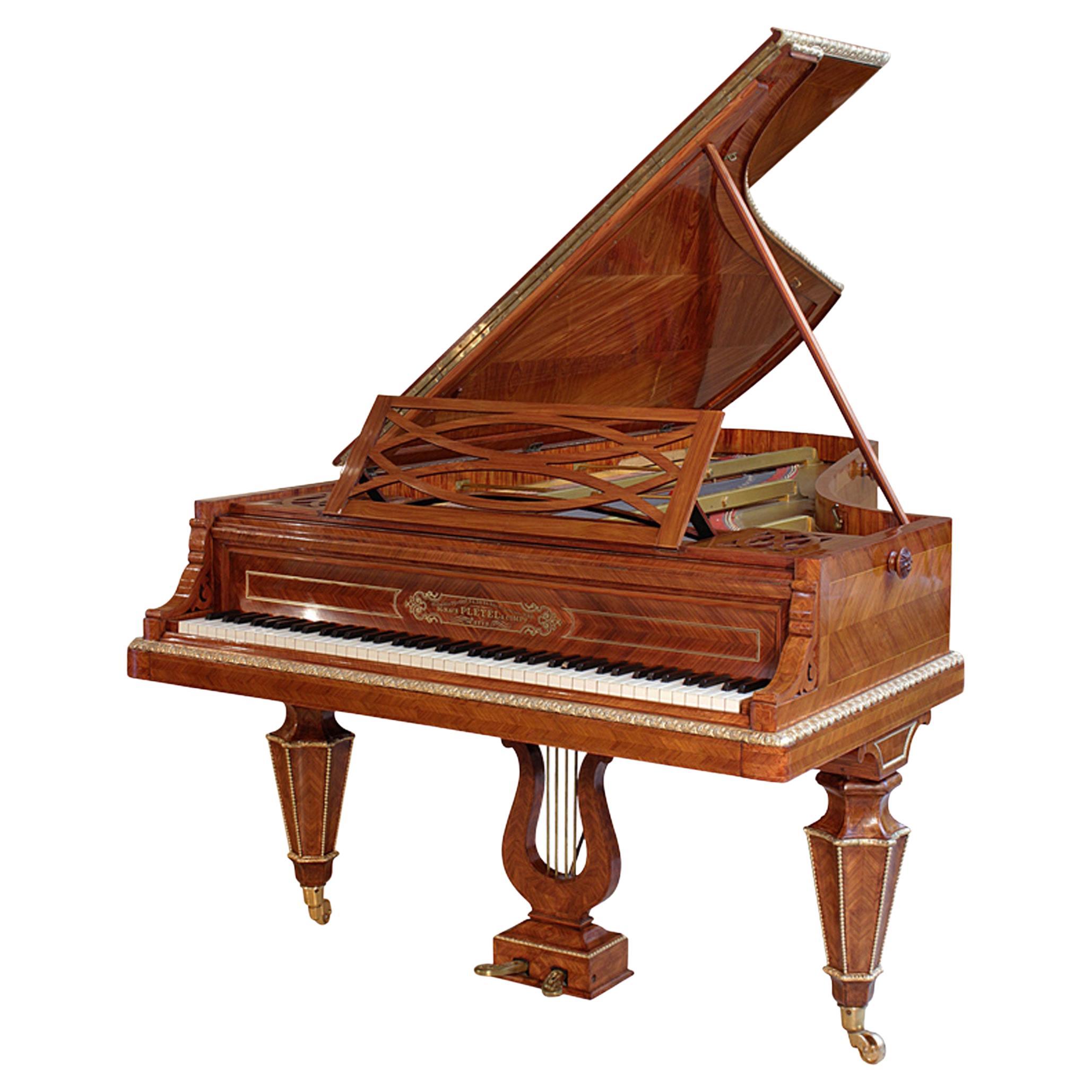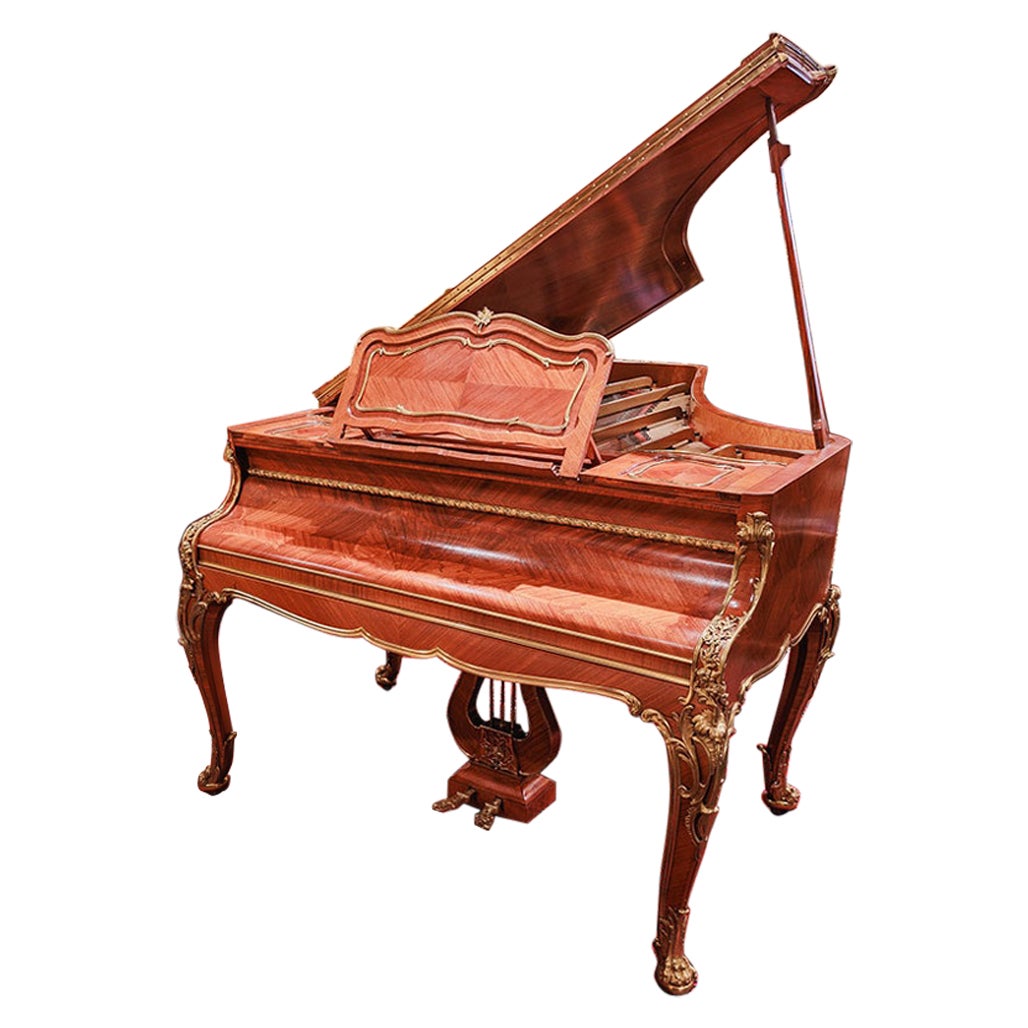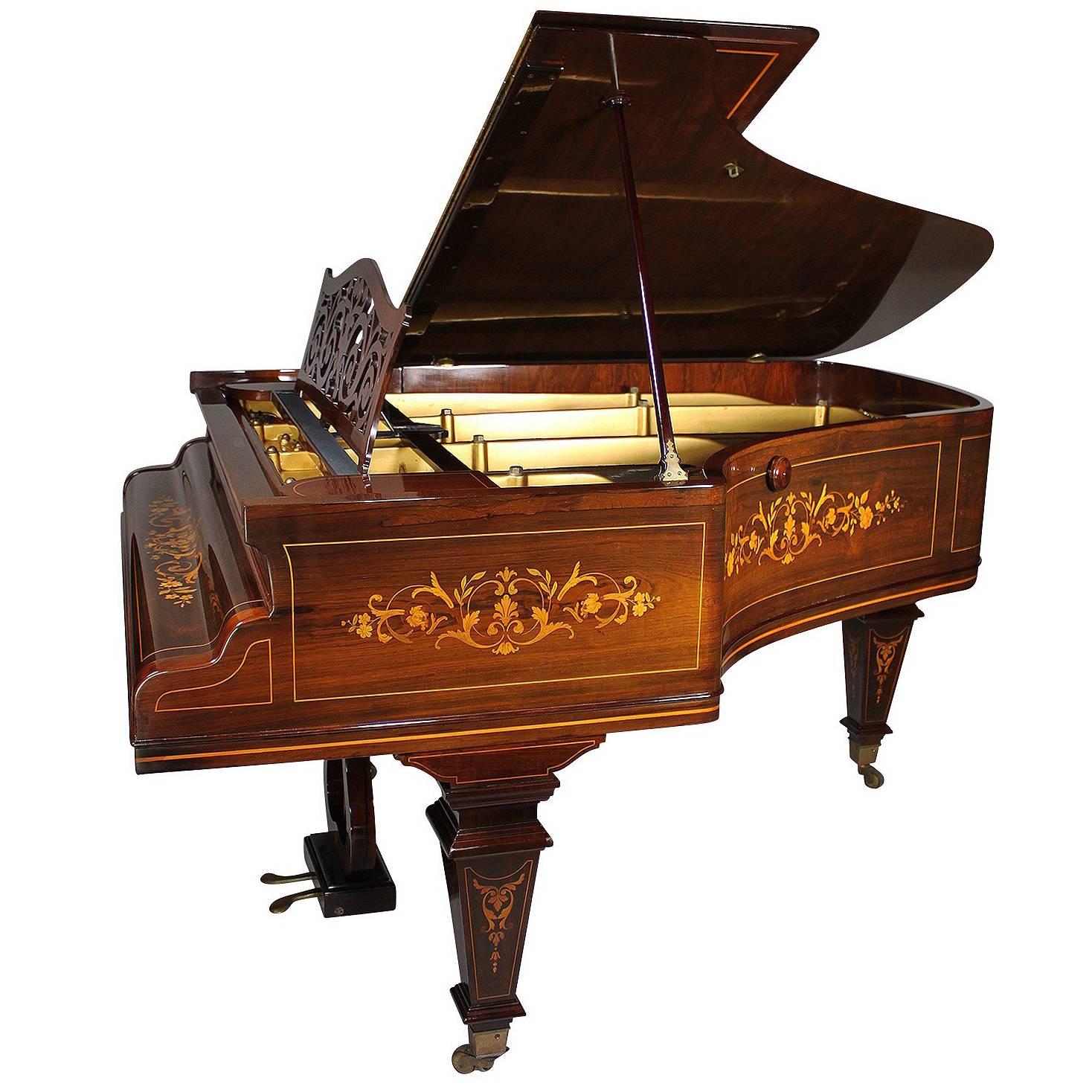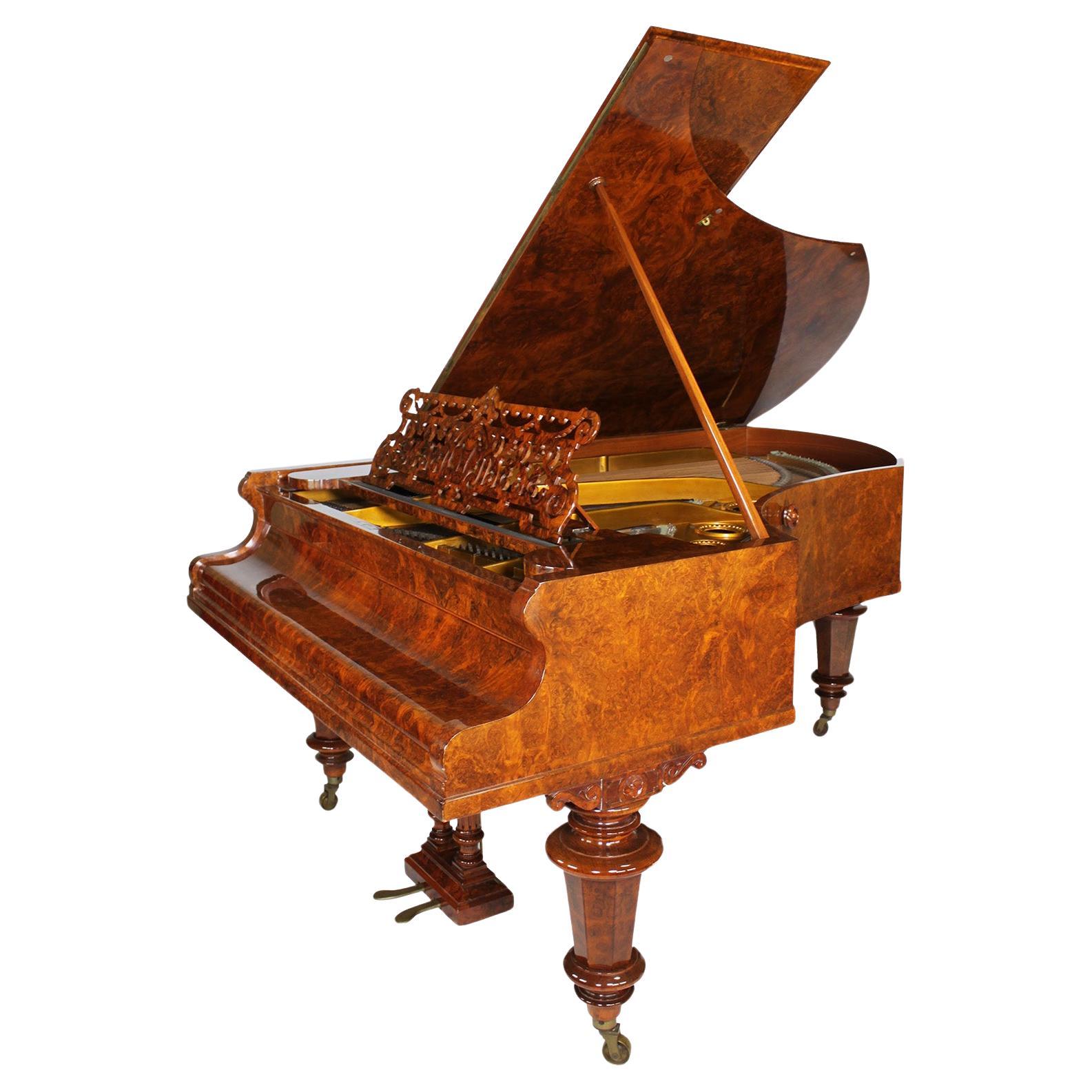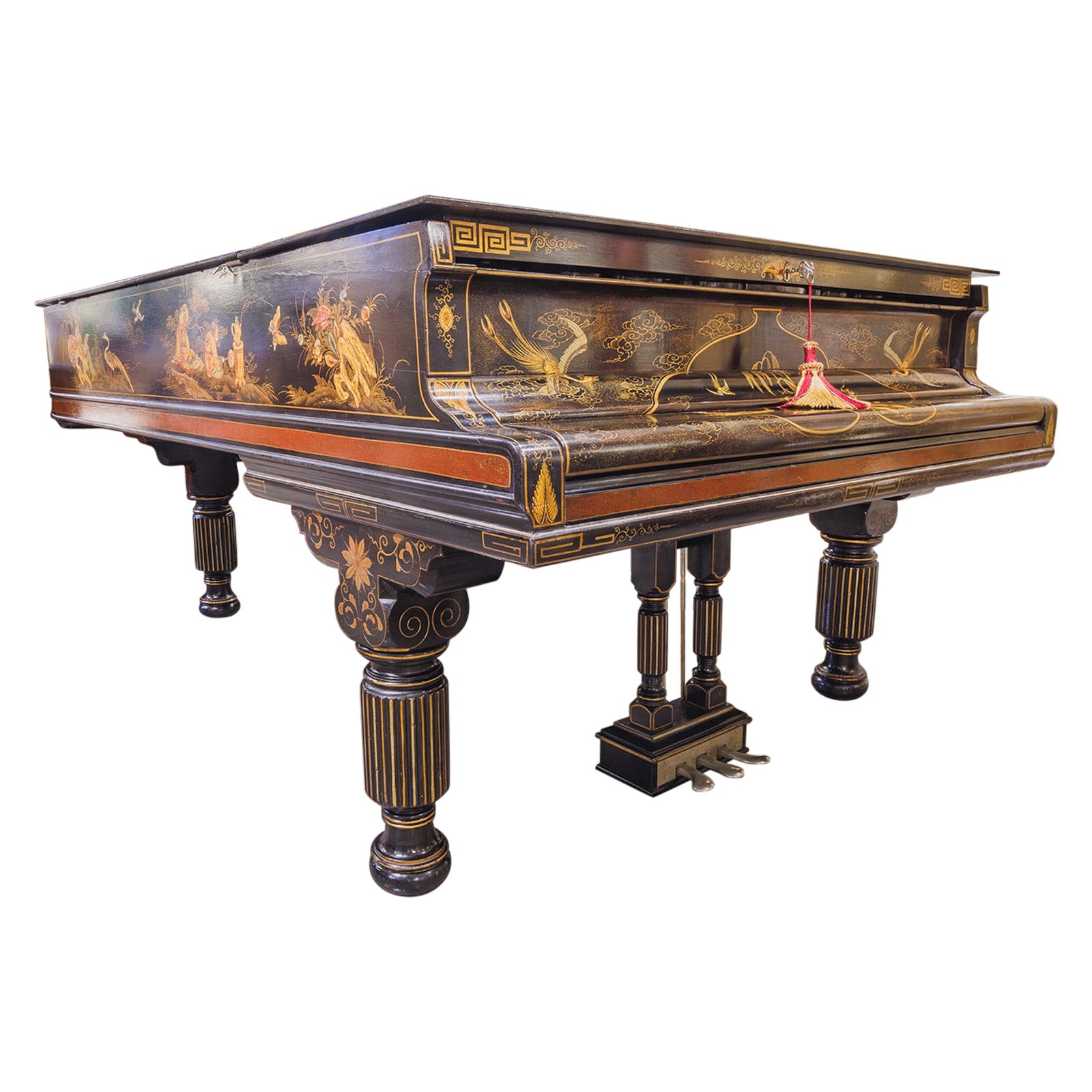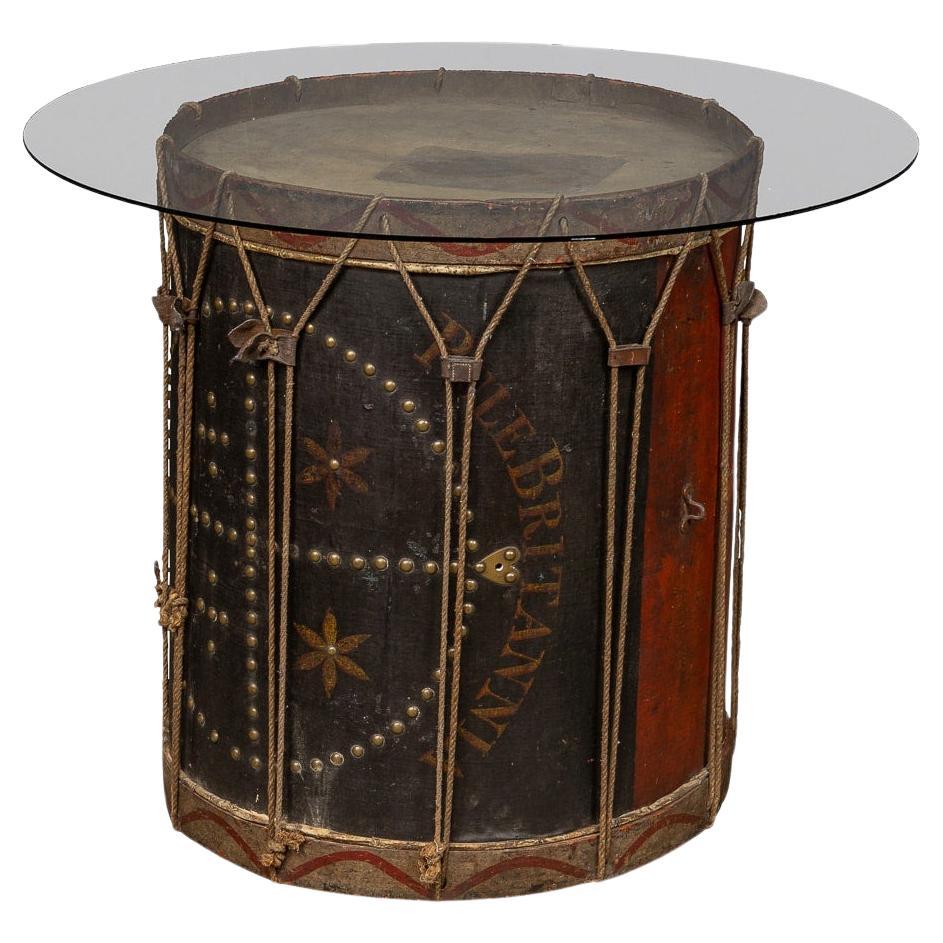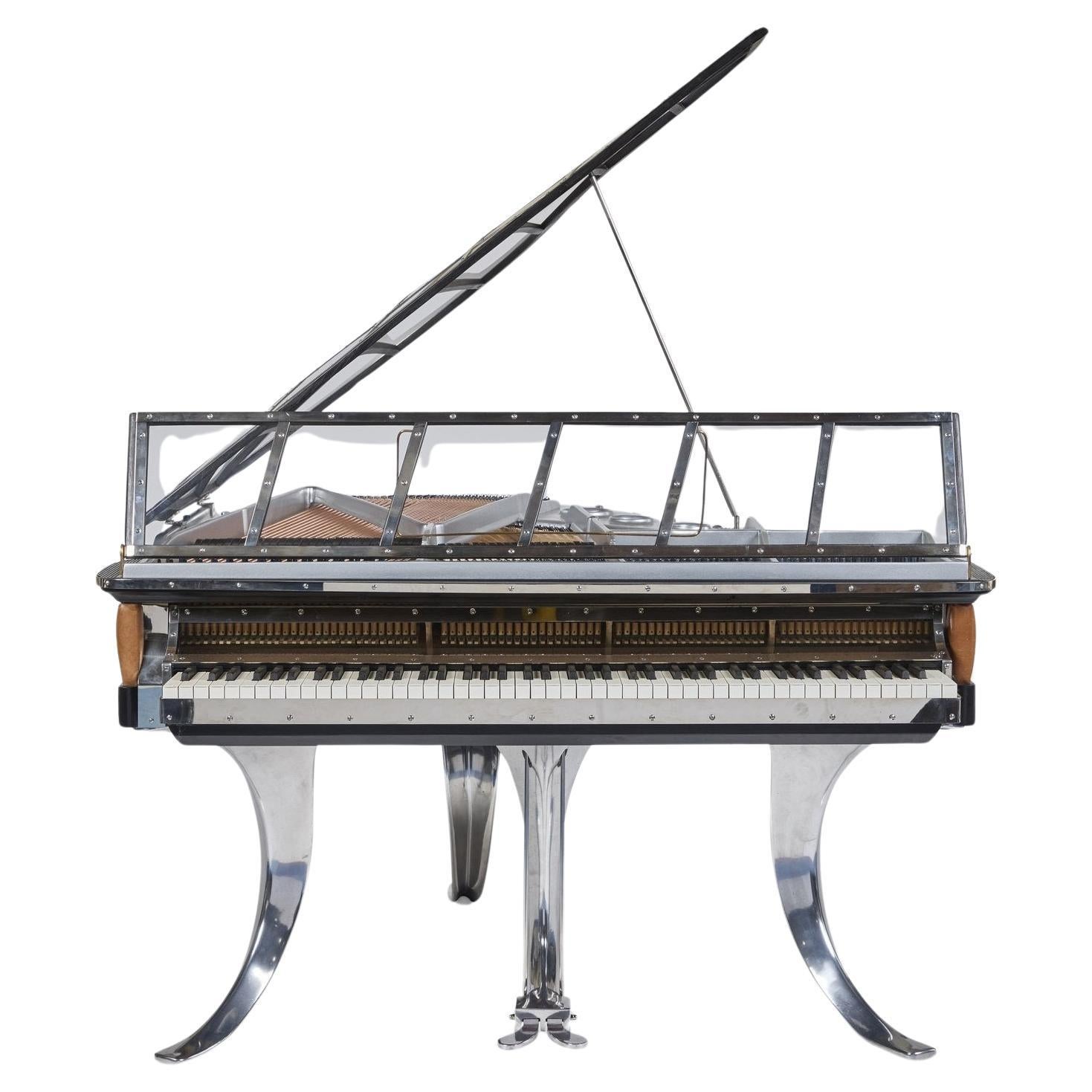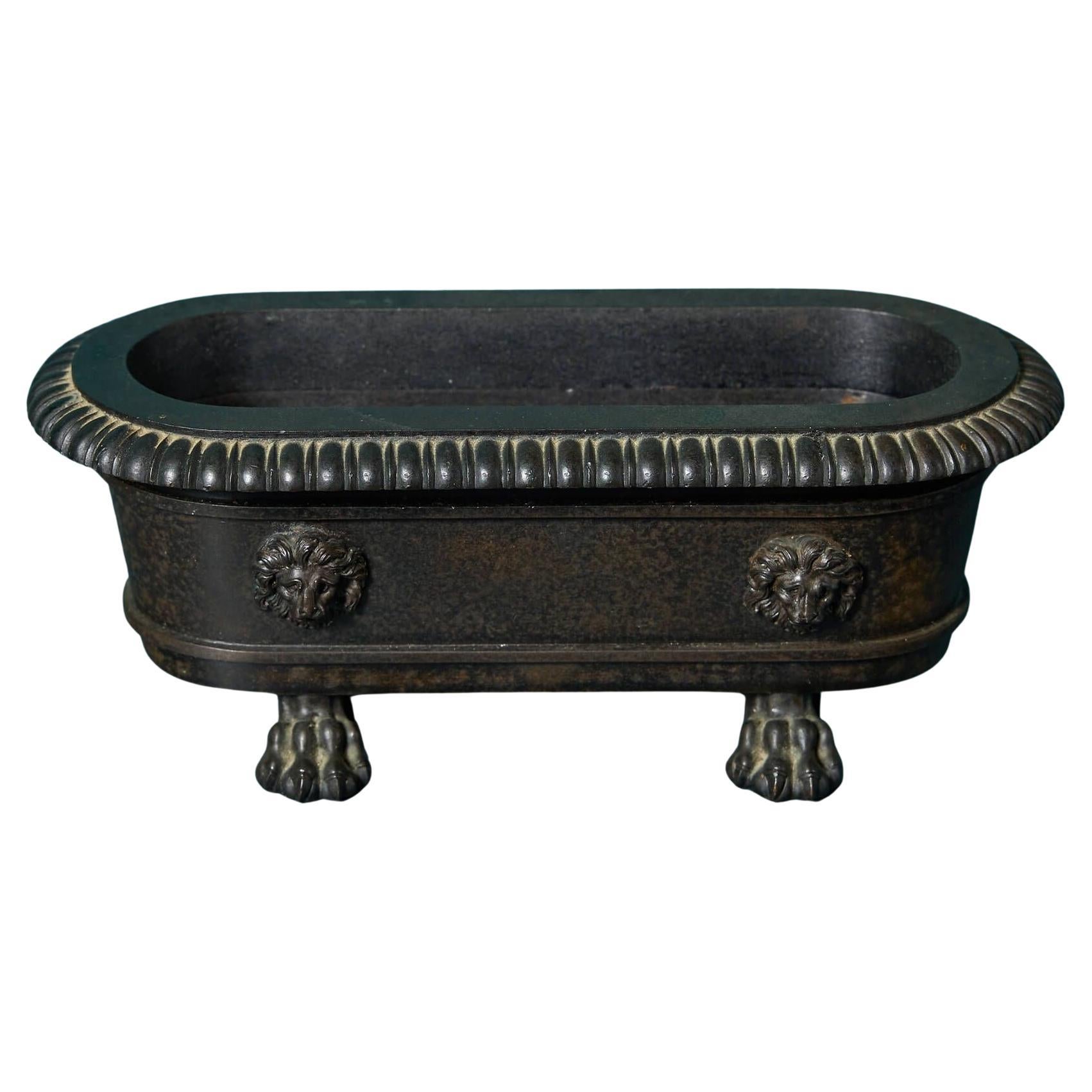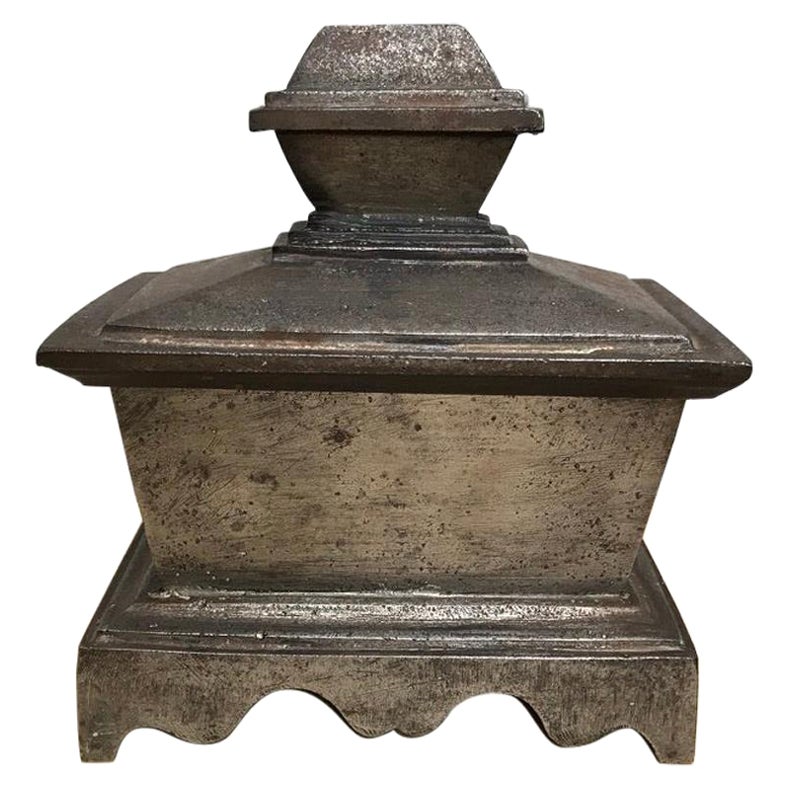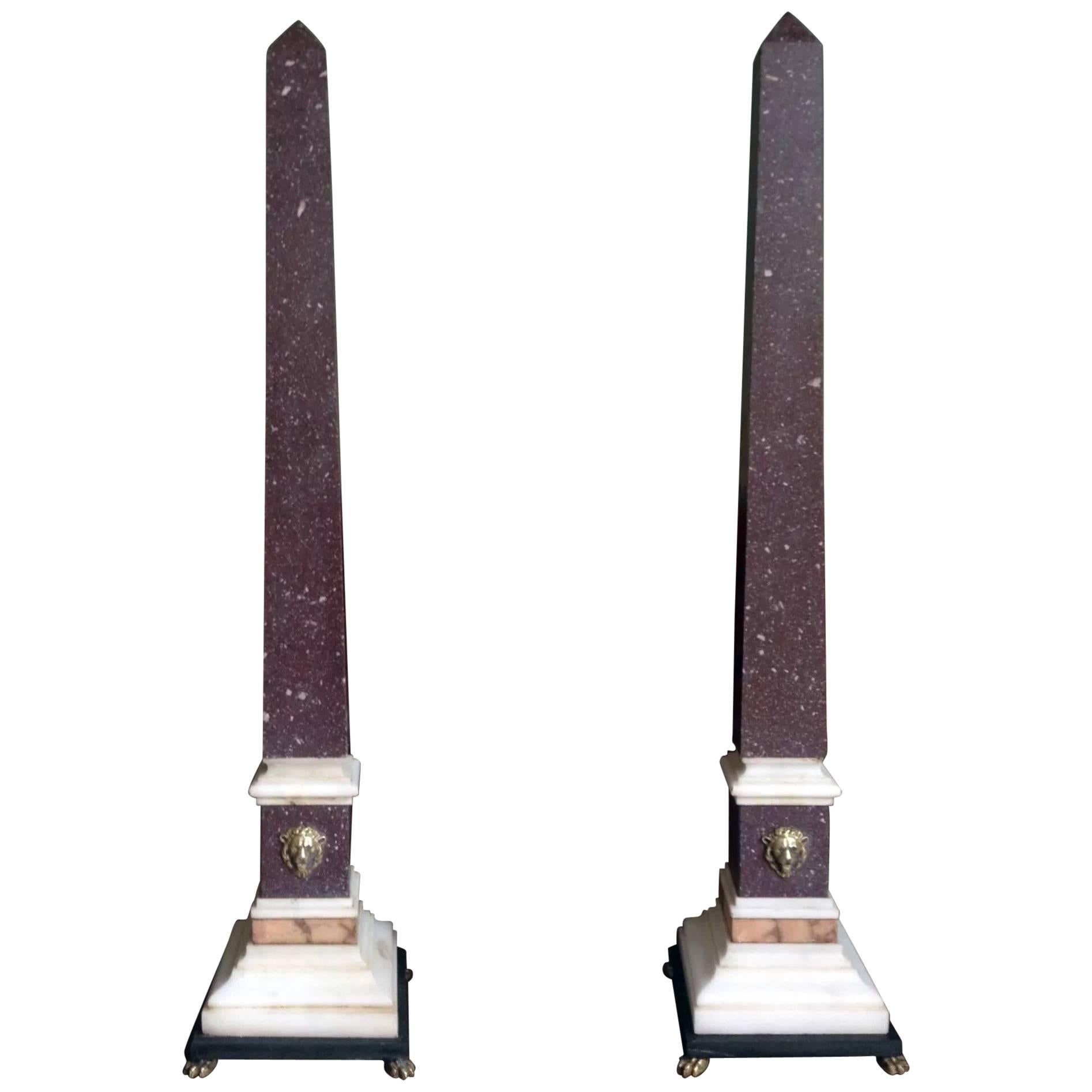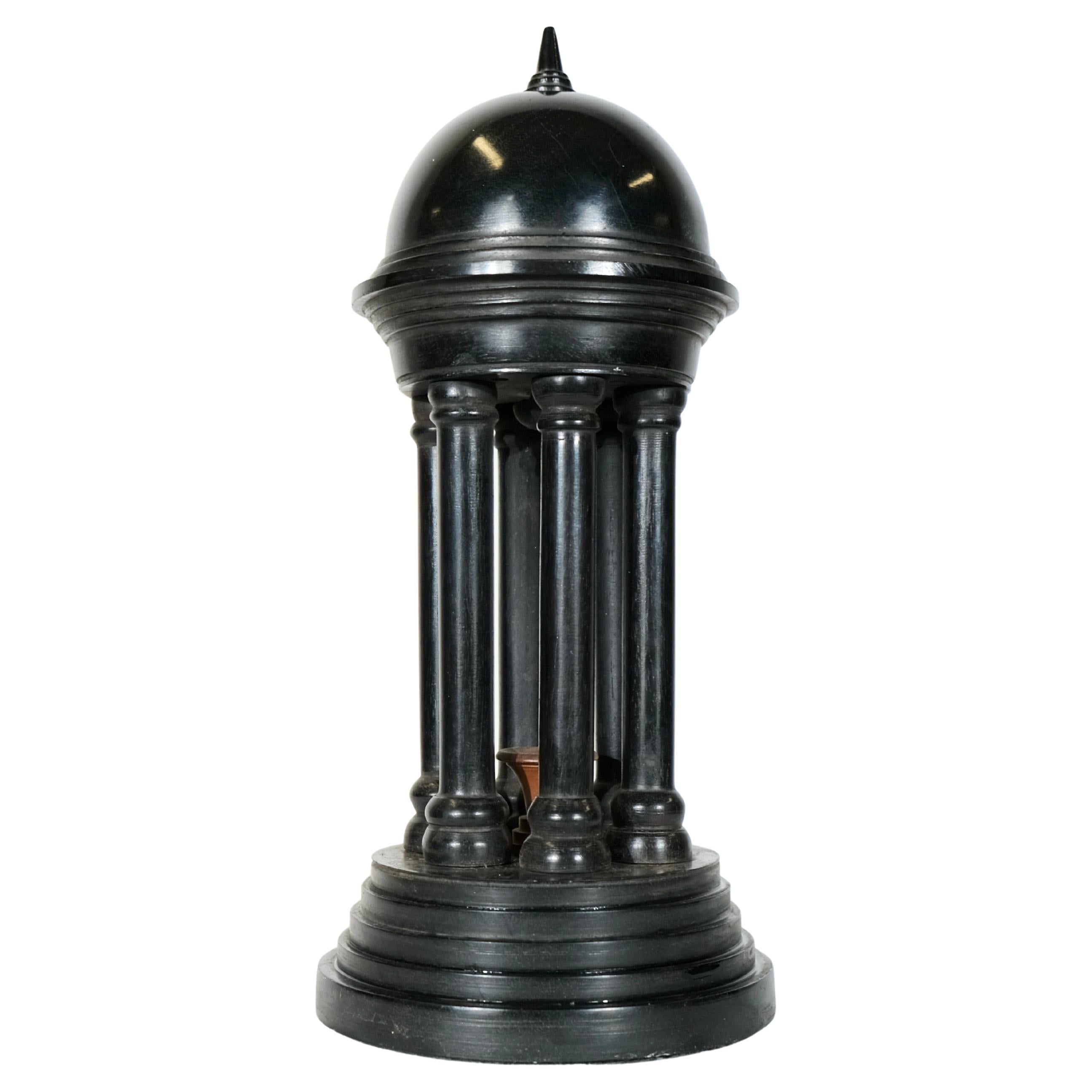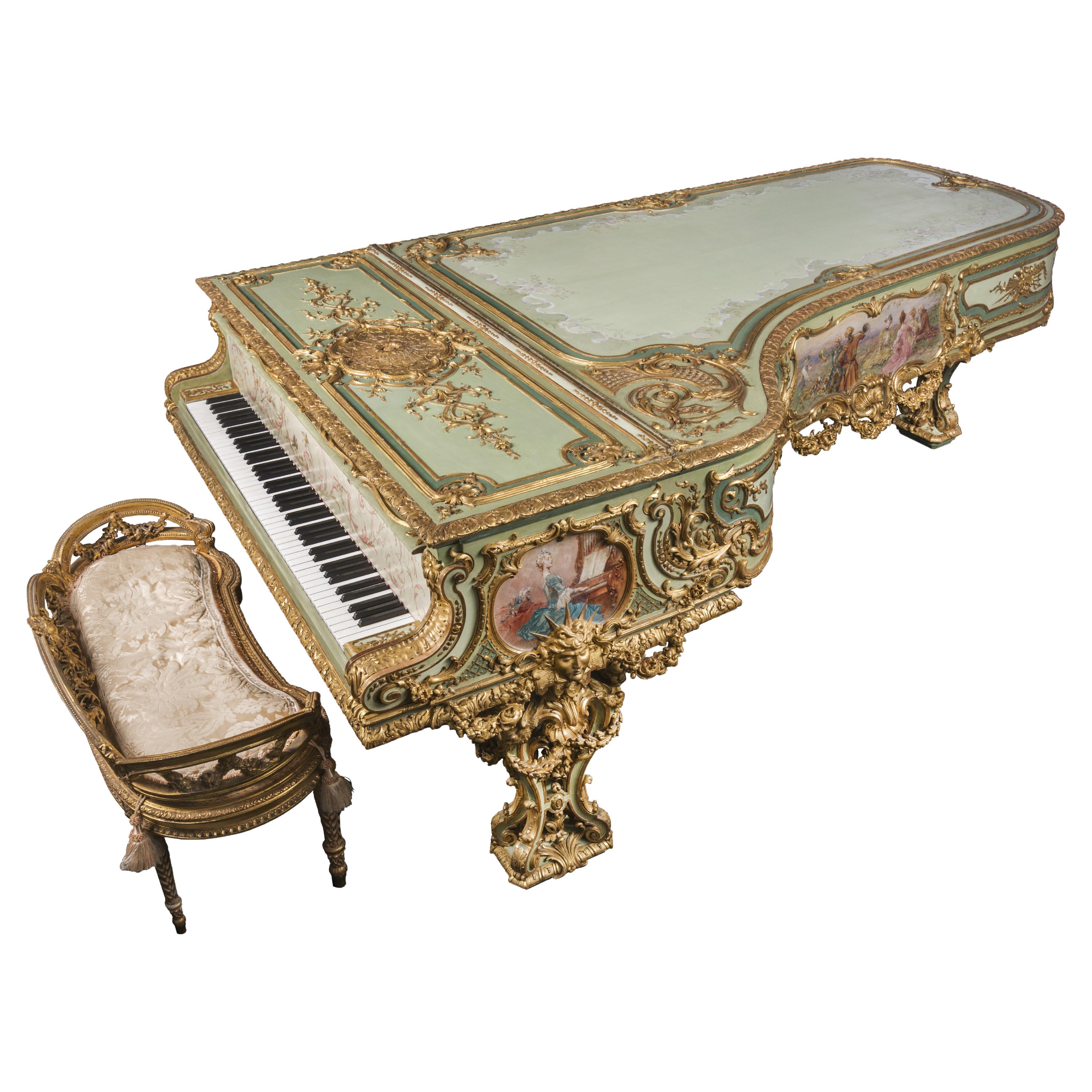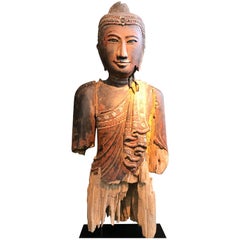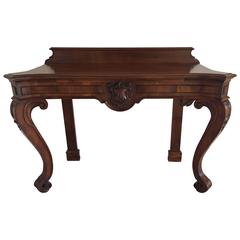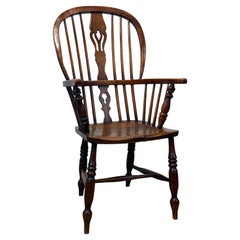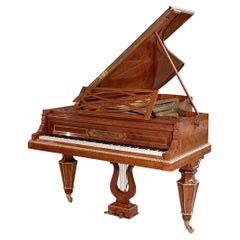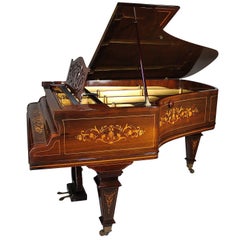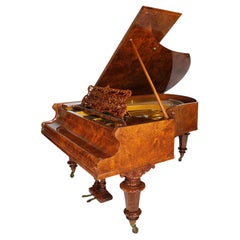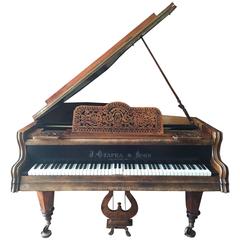
Grand Piano, 19th Century
View Similar Items
Want more images or videos?
Request additional images or videos from the seller
1 of 9
Grand Piano, 19th Century
Price:$8,253.32
$10,038.97List Price
About the Item
- Dimensions:Height: 37.41 in (95 cm)Width: 55.12 in (140 cm)Depth: 74.81 in (190 cm)
- Materials and Techniques:Wood,Polished
- Place of Origin:
- Period:
- Date of Manufacture:19th Century
- Condition:Wear consistent with age and use.
- Seller Location:Schellebelle, BE
- Reference Number:1stDibs: LU195634689893
About the Seller
4.5
Vetted Professional Seller
Every seller passes strict standards for authenticity and reliability
Established in 1997
1stDibs seller since 2016
97 sales on 1stDibs
Typical response time: 16 hours
Authenticity Guarantee
In the unlikely event there’s an issue with an item’s authenticity, contact us within 1 year for a full refund. DetailsMoney-Back Guarantee
If your item is not as described, is damaged in transit, or does not arrive, contact us within 7 days for a full refund. Details24-Hour Cancellation
You have a 24-hour grace period in which to reconsider your purchase, with no questions asked.Vetted Professional Sellers
Our world-class sellers must adhere to strict standards for service and quality, maintaining the integrity of our listings.Price-Match Guarantee
If you find that a seller listed the same item for a lower price elsewhere, we’ll match it.Trusted Global Delivery
Our best-in-class carrier network provides specialized shipping options worldwide, including custom delivery.More From This Seller
View AllWooden Hand of an Antique Mannequin, Italy, 18 th Century
Located in Schellebelle, BE
Beautiful sculptured hand of a wooden Mannequin,
Italy late 18 th Century mounted on a wooden stand,
very fine sculptured and good, old Patina of the wood,
very beautiful decorati...
Category
Antique Late 18th Century Italian Models and Miniatures
Materials
Fruitwood
Thai Wooden Buddha Head Sculpture, 19th Century
Located in Schellebelle, BE
Thai wooden Buddha head, carved with polychrome traces, 19th century
part of a standing Buddha
decorated with glass elements.
Category
Antique Late 19th Century Thai Antiquities
Materials
Wood
19th Century Mahogany Console with Coat of Arms, Irish
Located in Schellebelle, BE
Irish mahogany console with great patina.
Category
Antique 19th Century Irish Console Tables
Materials
Mahogany
A 19 th Century highjack Windsor Chair
Located in Schellebelle, BE
A beautiful handcrafted antique Windsor Chair in Elm Wood with crinoline stretcher,
late 19 th Century,nice and warm patina of the used Wood,
comfortable seating, warm color of the w...
Category
Antique 1890s British Chairs
Materials
Elm
Factice of Bottle of Champagne, Piper Heidsieck
Located in Schellebelle, BE
Stunnig display of bottle of Piper Heidsieck champagne,
Great piece of decoration.
Category
Vintage 1960s French Models and Miniatures
Materials
Plastic
Factice of a Bottle of Champagne, Ruinart
Located in Schellebelle, BE
Very elegant shop display of a bottle of Champagne, Ruinart.
Category
Mid-20th Century French Models and Miniatures
Materials
Plastic
You May Also Like
French Mid-19th Century Concert Grand Piano Signed Pleyel
By Pleyel
Located in West Palm Beach, FL
A spectacular French mid-19th century, circa 1855, Louis XVI st. tulipwood parquetry and ormolu mounted, Model 2 Concert Grand Piano, signed Pleyel...
Category
Antique 19th Century French Louis XVI Musical Instruments
Materials
Ormolu
A very fine 19th century Grand Piano by Joseph Emmanuel Zwiener
By Joseph-Emmanuel Zwiener
Located in Dallas, TX
A magnificent French 19th century Louis XV designed marquetry kingwood Grand Piano . Signed in the bronze by Joseph Zwiener. The finest gilt bronze mounts. 6 legs . The piano works b...
Category
Antique Late 19th Century French Belle Époque Musical Instruments
Materials
Bronze
19th Century Louis XIV Style Marquetry Baby Grand Piano by Collard & Collard
By Collard & Collard
Located in Los Angeles, CA
A very fine Anglo-French 19th century rosewood, palisander, amboyna and satinwood marquetry (inlaid) art-case baby grand piano, the works by "Collard & Collard". The intricately deco...
Category
Antique Late 19th Century English Neoclassical Revival Musical Instruments
Materials
Bronze
$75,600 Sale Price
20% Off
A German 19th Century Louis XVI Style Burr Walnut Bechstein Concert Grand Piano
By Bechstein Piano Company
Located in Los Angeles, CA
A Very Fine German 19th Century Louis XVI Style Burr Walnut Bechstein Concert Grand Piano, Serial No. 5655. The beautifully crafted Grand piano, raised on three tapered barrel shaped legs, with an intricately carved ornate music desk and original keys. Circa: 1872.
Length: 80 inches (203.2 cm)
Width: 59 inches: (149.9 cm)
Height (top closed): 38 5/8 inches (98.1 cm)
C. Bechstein Pianofortefabrik
C. Bechstein Pianofortefabrik AG (also known as Bechstein) is a German manufacturer of pianos, established in 1853 by Carl Bechstein.
Before Bechstein
Young Carl Bechstein studied and worked in France and England as a piano craftsman, before he became an independent piano maker. His first pianos were made for other companies.
C. Bechstein
C. Bechstein piano factory was founded on 1 October 1853 by Carl Bechstein in Berlin, Germany.
Carl Bechstein set out to manufacture a piano able to withstand the great demands imposed on the instrument by the virtuosi of the time, such as Franz Liszt. In 1857, Hans von Bülow (Liszt's son-in-law) gave the first public performance on a Bechstein grand piano by performing Liszt's Piano Sonata in B minor in Berlin
By 1870, with endorsements from Franz Liszt and Hans von Bülow, Bechstein pianos had become a staple in many concert halls and private mansions. By that time three piano makers, all of which were founded in 1853, became established as the industry leaders across the world: Bechstein, Blüthner and Steinway & Sons.
In 1881 Bechstein began supplying pianos to Queen Victoria. A gilded art-case piano was delivered to Buckingham Palace, followed by several more Bechstein pianos to Windsor Castle and other royal residences. By January 1886 they were among the piano manufacturers holding a Royal Warrant as a supplier to the Queen. Several British embassies across the world acquired Bechstein pianos.
In 1885, Bechstein opened a branch in London, that eventually grew to become the largest showroom and dealership in Europe. By 1890 showrooms had been opened in Paris, Vienna, and Saint Petersburg. On 31 May 1901, Bechstein Hall, built at a cost of £100,000, was opened next to the company's London showroom at 36-40 Wigmore Street. Between 1901 and 1914, C. Bechstein was the largest piano dealership in London. At that time, Bechstein was patronized by the tsars of Russia, the royal families of Spain, Belgium, the Netherlands, Italy, Sweden, Norway, Austria and Denmark, and other royalty and aristocracy. The list of royal clients of Bechstein may be found on the soundboard of vintage Bechstein pianos made before the Second World War. The list is part of the original Bechstein trademark logo; it can be seen under the strings in the center of a piano's soundboard.
The signature of Carl Bechstein
The years from the 1870s through 1914 brought Bechstein their most dramatic increase in sales. In 1880 a second Bechstein factory was opened in Berlin, and the third factory was opened in 1897 in Berlin-Kreuzberg. Production reached 3,700 pianos annually in 1900, and 4,600 in 1910, making Bechstein the largest German manufacturer of high-end pianos. At that time, about three quarters of production went to international markets, especially Britain and the Commonwealth, and Russia.
Carl Bechstein died in 1900, and the Bechstein company continued to operate under the management of his sons.
Between 1900 and 1914 C. Bechstein was one of the leading piano makers in the world, employing 1,200 craftsmen and workers by 1913 and making five thousand pianos per year.
First World War
C. Bechstein suffered huge property losses in London, Paris, and St. Petersburg during World War I. The largest loss was in London. Although the company's position in the United Kingdom was initially unaffected, with the company still listed as holding a Royal Warrant in January 1915, Warrants to both King George V, and his wife Queen Mary were cancelled on 13 April 1915. Bechstein was not the only musical concern to be affected by growing anti-German sentiment: there were earlier attempts, led by William Boosey, to boycott German music altogether. In 1915, despite being a Baronet and Privy Counsellor, Sir Edgar Speyer, who was then funding the Proms, was forced to leave the country. Following the passing of the Trading with the Enemy Amendment Act 1916 the British arm of the company was wound-up on 5 June 1916, all Bechstein property, including the concert hall and showrooms full of pianos, were seized as "enemy property" and closed. In 1916 the hall was sold as alien property at auction to Debenhams for £56,500. It was renamed Wigmore Hall, and then re-opened under the new name in 1917. All 137 Bechstein pianos at the Bechstein showrooms were confiscated too, and became property of the new owner of the Hall. After a dispute with his brother, Edwin Bechstein left the company and was paid off.
Eventually the Bechstein factory resumed full-scale production during the 1920s. At that time, technical innovations and inventions of new materials and tools, as well as improvements in piano design and construction, had allowed Bechstein to become one of the leading piano makers again.
The most successful models were the updated "A"-185 and "B"-208 grand pianos. The upright pianos became more popular after the war, and C. Bechstein were successful with its upright pianos Model-8 and Model-9, both of which have been considered the finest upright pianos.
As the company was changed into a joint-stock company 1923, Edwin Bechstein and his wife Helene, bought themselves back into the company as shareholders.
In 1930 the company collaborated with German electrical goods manufacturer Siemens under Nobel laureate Walther Nernst to produce one of the first electric pianos...
Category
Antique 19th Century German Louis XVI Musical Instruments
Materials
Bronze
$49,850 Sale Price
33% Off
A fine rare 19th c Steinway grand piano ebonized and Chinoiserie painted scenes
Located in Dallas, TX
A spectacular 19th century Black Chinoiserie lacquered Presentation Steinway & Sons Grand Piano . Model #37278 ,having fall key cover reading Steinway & Sons patent Grand New York &...
Category
Antique Late 19th Century English Chinoiserie Musical Instruments
Materials
Ebony
Antique 19th Century Regency Grand Military Drum c.1820
Located in Royal Tunbridge Wells, Kent
Antique 19th Century Regency grand military drum, dating to around the 1820. Made from wood, with brass stud work, this drum is painted with a Rule Britannia insignia. The top has a ...
Category
Antique 1820s British Other Musical Instruments
Materials
Brass
Recently Viewed
View AllMore Ways To Browse
Piano Action
1950 Record Player
1970s Record Player
Concert Grand Piano
Harp String
Ormolu Piano
Rococo Piano
Music Box With Bells
Philips Vintage Radios
Space Age Radio
Antique Phonographs
Danish Mid Century Piano
Space Age Speakers
Walnut Grand Piano
Antique Music Machine
Art Deco Grill
Braun Dieter Rams
German Piano Upright
